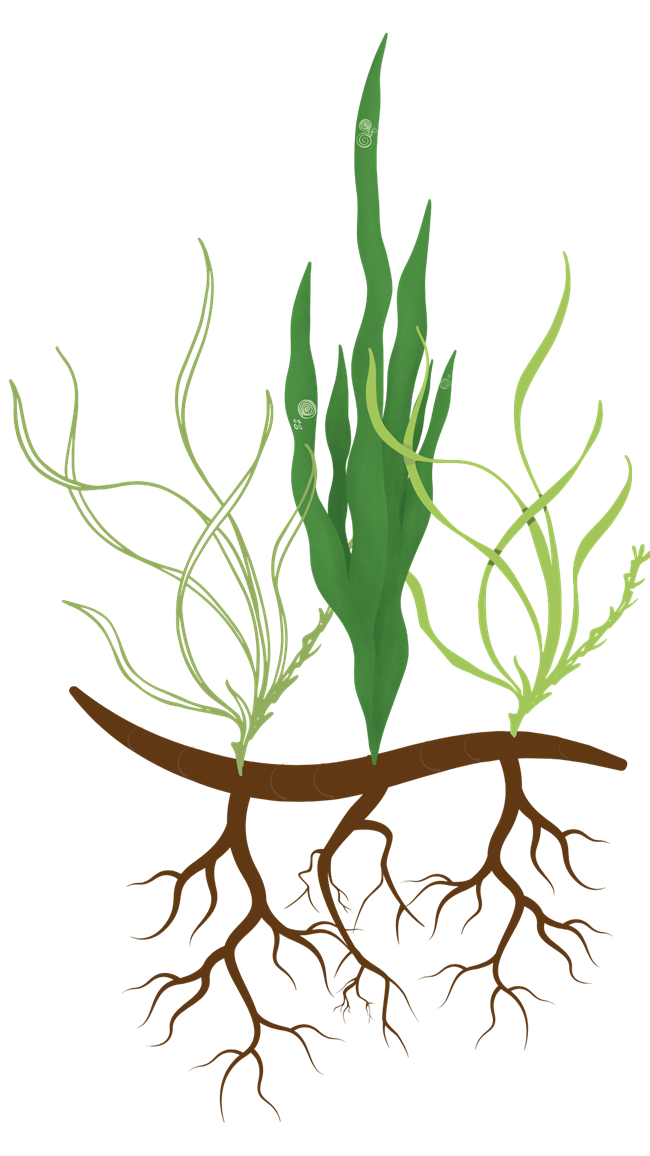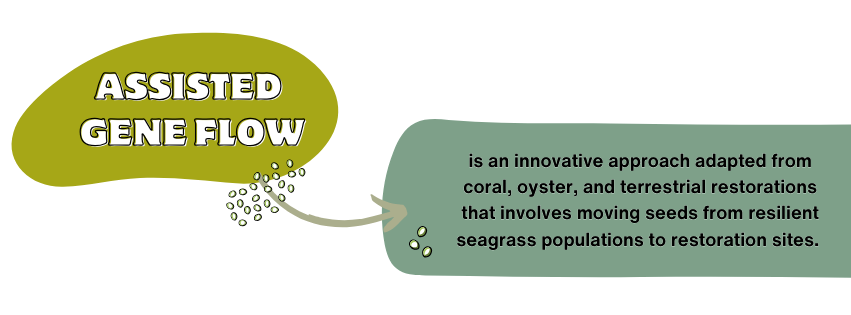Last updated: December 3, 2024
Article
Bridging Genetic Diversity: Beginnings of Seagrass Restoration Along in East Coast Parks
Snipping blades and sequencing genomes, our team of scientists along the eastern seaboard have begun working to identify resilient seagrass populations through the study of one key species, Zostera marina, or eelgrass.
Seagrasses are often an undervalued key component of the interconnected coastal mosaic.

Seagrasses offer an opportunity for building coastal resilience through nature-based solutions. We aim to enhance the resilience of seagrass meadows through restoration and rehabilitation, and to halt declining trajectories across seven coastal parks from Maine to North Carolina. The aim of the project is to collect scientific information needed to develop restoration methods that will encourage a reverse of declining meadows.
The strategy? Assisted gene flow.
Assisted gene flow (AGF) is an innovative approach adapted from coral, oyster, and terrestrial restorations. The process involves first identifying healthy seagrass populations that are thriving in good conditions. Samples from these healthy populations are gathered in the form of seeds or blade fragments. At this time, 952 samples have been collected across 65 meadows in 10 states. These samples are sent off for genetic sampling where the lab extracts DNA and conducts genetic sequencing to analyze their genetic makeup.
The result? Millions of single nucleotide polymorphisms.
These genetic markers allow scientists to assess the plants genetic diversity within and between populations. The genomic data helps determine genetically appropriate populations for seed sources. These identified populations have traits (e.g. high thermal tolerance) and adaptive potential that make them more resilient to environmental stressors, such as fluctuating temperatures, increased salinity, and disease.As the samples continue to flow from field surveys to the lab in (WHERE), the team is working to identify optimal areas for recovery. In coming months, the NPS and many partners will move eelgrass seeds from resilient populations to identified restoration sites. The goal is to enhance selected sites with genetically diverse individuals. All aspects of the project are scalable, and the benefits of the project will extend beyond target meadows as these resilient populations spread into adjacent waters in the coming decade. Continued ecological assessments of the transplanted seeds will allow scientists to gauge the effectiveness of the method.
Ultimately, scientists are aiming to create more resilient seagrass ecosystems that can withstand ongoing environmental changes, strengthen shorelines, support marine habitats, and improve water quality.
This process yields the best chance to halt or even reverse seagrass decline and offers the opportunity for co-stewardship through engagement and partnerships with agencies, Tribes, academic institutions, NGOs, youth, & Justice40 communities. The project has received funding from the Inflation Reduction Act (IRA), as well as generous contributions from the National Park Foundation. Led by the National Park Service’s Northeast Coastal and Barrier Network, the project is a collaborative effort across many partners and geographic areas.
